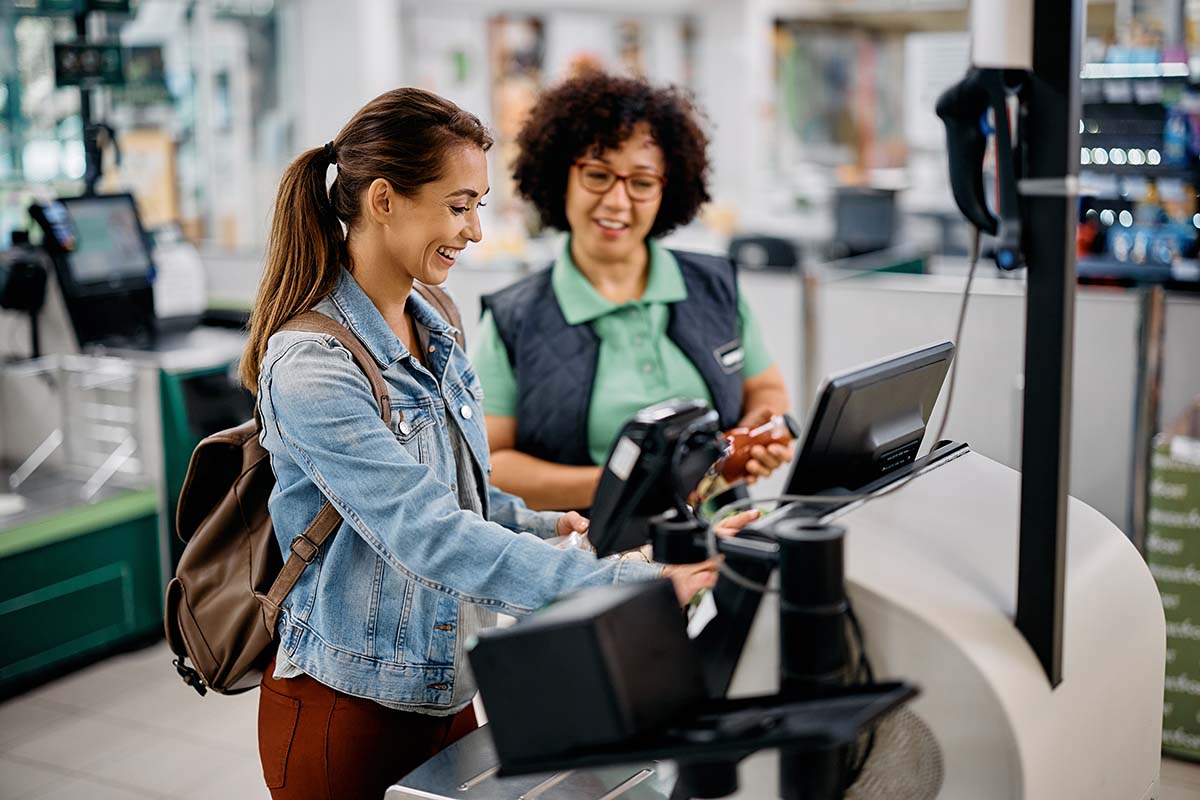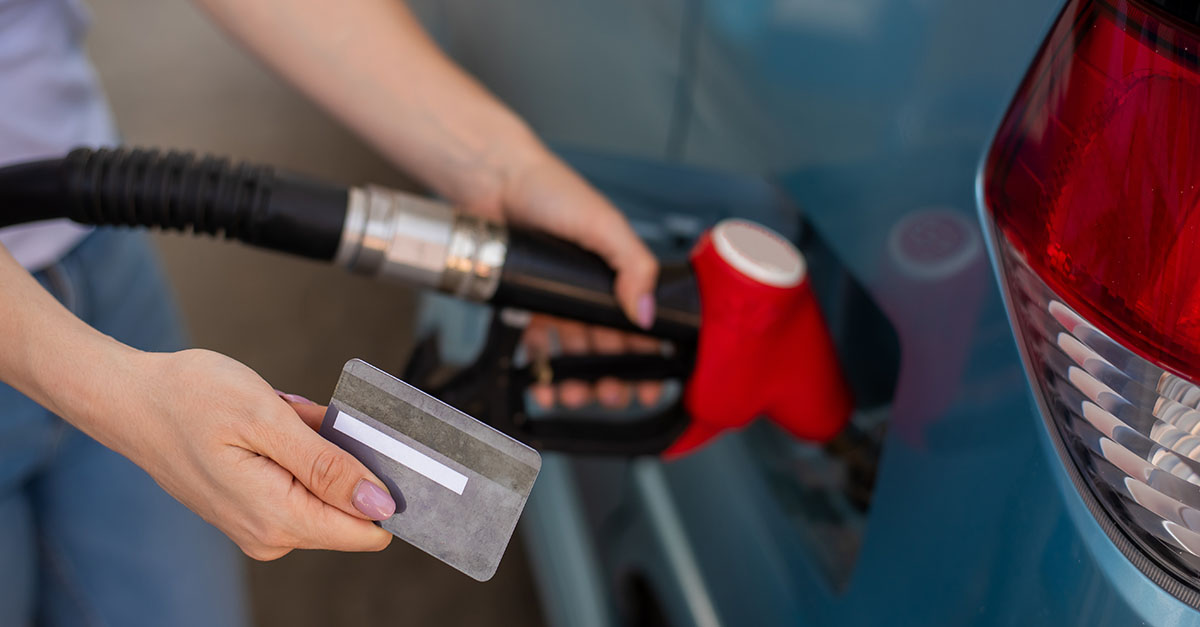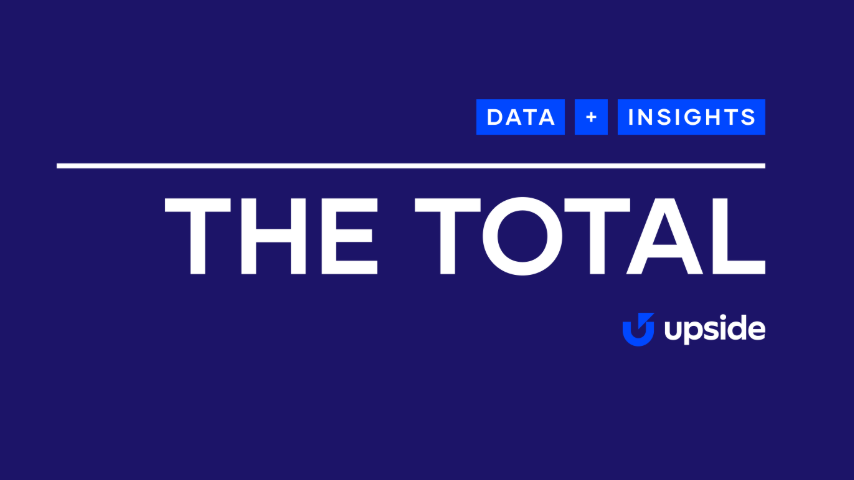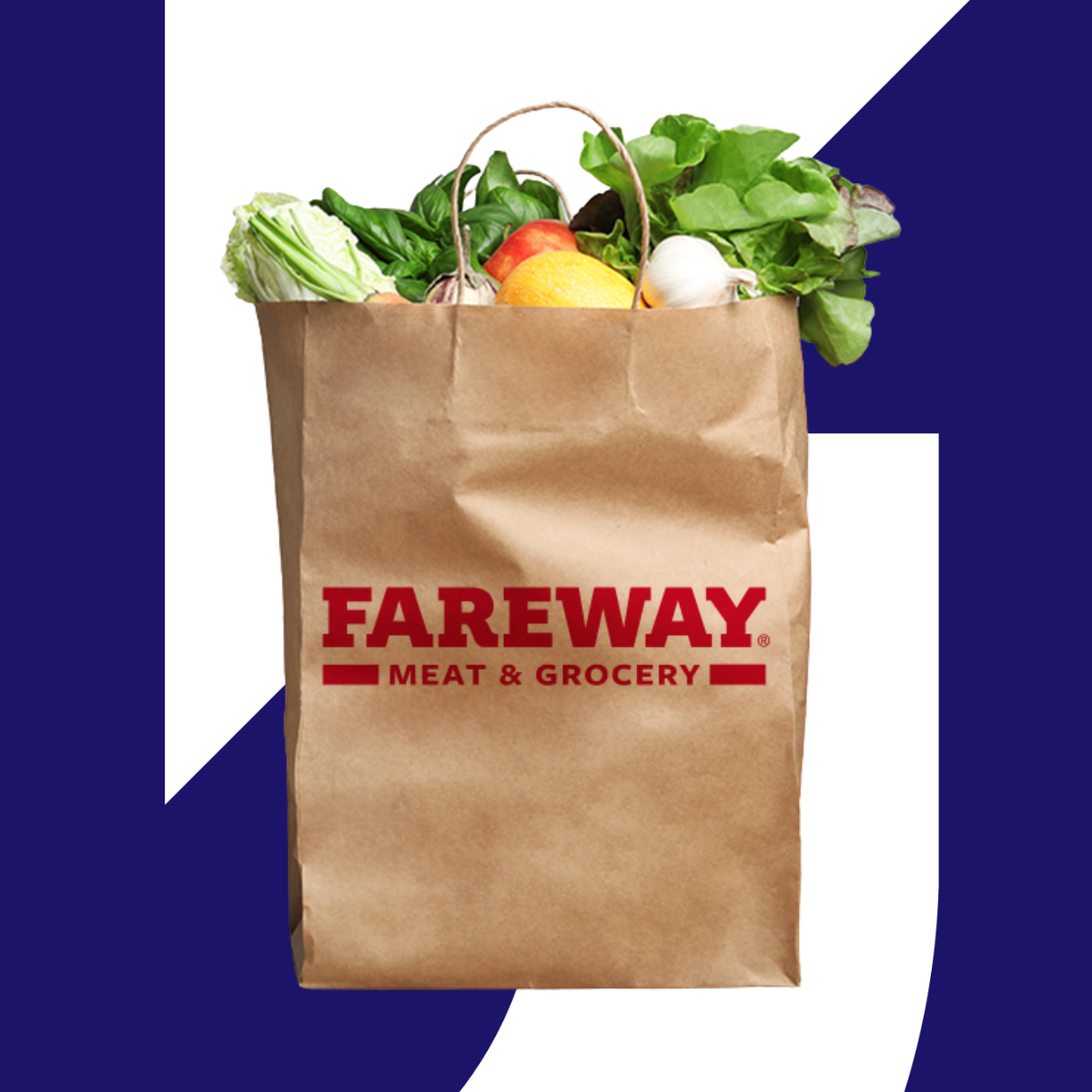How to increase sales in retail grocery stores and supermarkets

The Upside Team
Many grocery stores have untapped capacity that can be converted into incremental profit. Shoppers split their spending across multiple stores each month, and a large share — often 80% — are uncommitted, meaning they could easily choose a competitor.
Increasing sales in retail requires optimizing sales per labor hour with truly incremental transactions. The key is identifying strategies that generate new revenue rather than pulling forward demand that your store would have captured anyway. Targeted, data-driven incentives can convert uncommitted shoppers into profitable, repeat customers while protecting your margins.
Personalized cash-back offers that increase grocery sales
Without targeted cash back promotions, more than 40% of customers in a given month won't return within the next year. Effective customer acquisition focuses on attracting customers with offers that influence shopping decisions rather than discounting purchases they'd make anyway.
Attracting customers to your store becomes more predictable when you target uncommitted shoppers needing value to change their shopping habits.
Promotional strategies that protect your margins while filling capacity
The most successful grocery retailers understand that different customers need different incentives to change their behavior. Each customer responds differently to promotional interventions. Personalized offers tailored to individual behavior patterns create powerful value, rather than segmenting customers and applying the same offer to each group.
- New customers: First-time visitors need compelling offers that overcome their unfamiliarity with your store. Personalization technology determines the optimal incentive level based on demonstrated behavior patterns, influencing their initial visit while setting expectations for future engagement.
- Infrequent customers: Quarterly shoppers may require larger incentives to overcome established competitor habits, but they represent significant incremental potential. The key is delivering the precise offer level that influences their decision without over-discounting.
- Occasional customers: Monthly visitors represent the highest-value opportunity because they already know your store but aren't fully committed. Moderate offers can shift them from competitors and increase visit frequency, turning sporadic shoppers into regular revenue contributors without the acquisition costs related to winning entirely new customers.
- Regular customers: These loyal shoppers tend to need smaller incentives — typically just enough to encourage larger basket sizes. Over-incentivizing this group wastes margin on purchases they'd make anyway, so personalization engines focus on protecting expected profit while rewarding consistency.
A cash back app for groceries works best when it complements your existing loyalty program rather than competing, building stronger retention that eliminates typical customer drop-off patterns.
Converting uncommitted customers who shop multiple stores
Uncommitted customers behave differently from loyal shoppers, so your approach needs to be different, too. While these customers often join loyalty programs or download apps, being a program member doesn't necessarily impact their future shopping behavior. Having access to standard loyalty discounts won't automatically make them choose your store over competitors, which means they need immediate benefits that compete with wherever they're shopping now. The rapid value is key because loyalty programs are not very differentiated. Across most grocers, a loyalty program is a loyalty program, and that's why they don't necessarily impact decisions on where to shop.
Your best opportunity is reaching these customers when they're actively deciding where to shop, not hoping they remember your promotion later. When someone is comparing grocery options in real-time, a personalized cash-back offer can tip the decision in your favor. This timing advantage beats blanket advertising that tries to reach everyone.

These shoppers are worth pursuing because you can win a large number of trips you're not already getting, turning potential customers into incremental business. While loyal shoppers have predictable basket sizes, new customers present an opportunity since they're not currently shopping with you. Once they experience your store, you have the chance to wow them with your experience, selection, and service, and win more of their trips.
Cash-back delivers immediate value while giving you transaction data to improve future targeting. You earn their business by delivering tangible benefits upfront and incentivizing them to build habits with you, not by asking for loyalty first.
Adjusting offers based on individual customer behavior
You can maximize promotional impact by tailoring cash back amounts to individual customer behavior patterns. This precision targeting protects profitability while driving incremental visits:
- Weekly shoppers: Need small cash back amounts to increase what they buy during visits they'd make anyway, protecting your profit on loyal customers while encouraging larger purchases.
- Monthly visitors: Respond to moderate offers that can shift them away from competitors and bring them in more often, turning occasional shoppers into regular customers.
- Lapsed customers: Require compelling offers to overcome months of shopping elsewhere, but represent pure incremental revenue when they return to your store.
Marketplaces with fuel and dining that boost grocery visits
If your grocery store participates in marketplaces that include fuel and restaurant offers, you benefit from increased customer engagement across their entire shopping routine. This cross-category approach drives more frequent visits without additional investment.
Combining cash back with existing loyalty programs

When customers engage with loyalty programs and personalized cash-back offers in the same month, over 90% return the following month. This combination mitigates the typical retention drop-off after initial visits.
Cash-back offers complement existing loyalty programs without competing for customer attention. Loyalty points reward long-term engagement, while cash-back provides short-term gratification. They address different customer motivations and create stronger retention than either approach alone.
How fuel and restaurant offers drive grocery store customers
Customers who use marketplaces that include fuel, dining, and grocery offers help your store benefit from their engagement across all categories:
- New customer discovery: Someone who uses the platform for gas stations will see your grocery offers in the same app, bringing you customers you wouldn't reach through grocery-only marketing.
- Higher visit frequency: Customers who engage with multiple categories visit participating grocery stores more often because the platform becomes part of their routine.
- Better retention: Marketplace users who engage across categories show stronger month-over-month retention than single-category promotional users.
- No additional costs: Your grocery store benefits from promotional activities in other categories without paying for that cross-category customer acquisition.
Measuring which customers you genuinely influenced
It's challenging for grocery stores to distinguish between customers they influenced and those who would have shopped anyway. Proper measurement methodology solves this problem:
- Test versus control analysis: Compare customers who see offers against those who don't to prove which visits wouldn't have happened otherwise, eliminating guesswork about promotional effectiveness.
- Individual customer tracking: Monitor each customer's behavior changes to calculate exactly how much additional revenue comes from promotional activities versus normal shopping patterns.
- Independent verification: Third-party validation of results can help provide confidence that internal reporting accurately reflects business growth rather than cannibalizing sales.
- Performance-based optimization: Offers are adjusted based on the exact amount it will take to move a customer from one store to another, ensuring every promotional dollar contributes to measurable business growth.
Profit-share models that guarantee positive returns
Traditional advertising charges upfront with uncertain results or is based on results that may not impact your bottom line. Profit-share models align incentives by tying payment directly to proven incremental transactions, eliminating financial risk while guaranteeing measurable returns. You only pay for customer transactions you wouldn't have gotten otherwise, transforming promotional spend from a cost center into a guaranteed profit driver.
Performance-based customer acquisition without upfront risk
Pay-for-performance partnerships flip traditional advertising economics by focusing on results rather than reach or engagement:
- Pay only for results: You invest only after customers actually visit and make purchases, eliminating spend on campaigns that don't drive sales.
- True incremental profit: Payment is tied to new profit you wouldn't have earned otherwise, not sales that would have happened anyway.
- Aligned incentives: Your partner succeeds only when you succeed, creating genuine collaboration rather than vendor relationships focused on their own metrics.
- Risk-free scaling: Proven results let you expand customer acquisition and retention confidently without upfront budget risk or uncertain returns.
Working alongside your current programs
Cash-back programs can work alongside your existing loyalty programs and local advertising without competing for customer attention or budget. Your current programs continue unchanged while cash-back offers bring in new customers and increase visit frequency from and build stronger habits with existing ones.
The combination is more powerful than either approach alone. Customers who engage with both loyalty programs and cash-back offers show higher retention rates and visit more frequently than those using just one program.
Learn how to increase sales in retail grocery stores & supermarkets with Upside
Upside for grocers connects grocery businesses with nearby consumers through personalized cash-back promotions that drive measurable incremental profit. You only pay when we deliver proven new transactions, guaranteeing positive returns.
Upside's cash back offers reach more than 30 million consumers and complement existing loyalty programs without claiming credit for customers you'd already attract. Ready to increase your grocery store sales through profitable new transactions? Request a demo.
Frequently asked questions
How to boost grocery store sales?
Boosting grocery store sales becomes more achievable when you target the uncommitted customers who represent 80% of your customer base through personalized cash-back offers that drive incremental transactions. The most effective approach uses pay-for-performance models where you only pay for proven new visits, transforming uncertain investments into guaranteed revenue growth.
What is the most profitable part of a grocery store?
The most profitable opportunity in a grocery store lies in driving up sales per labor hour from incremental customers through targeted promotional strategies. These additional transactions help increase supermarket sales by adding new revenue streams without cannibalizing existing sales or requiring operational changes.
Are grocery stores hard to run?
Grocery stores face natural challenges since customers shop at more than five different stores each month, but the right promotional strategies can significantly improve retention. Personalized cash-back platforms that complement existing loyalty programs can increase month-over-month retention rates to over 90%, creating predictable customer patterns that make operations more manageable.
Share this article:
The Upside team is made up of data scientists and industry experts who are passionate about delivering empowering content to our readers. With a focus on providing practical insights and meaningful perspectives, we create engaging materials across a wide range of topics. From exploring industry trends and offering expert analysis to sharing useful tips and inspiring ideas, our team works diligently to provide you with the information you need to thrive.
Request a demo
Request a demo of our platform with no obligation. Our team of industry experts will reach out to learn more about your unique business needs.









.png)





